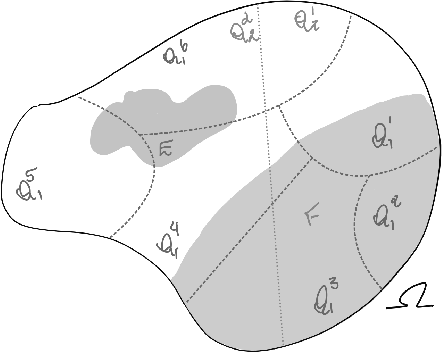Introduction
In the realm of decision-making, biases and cognitive shortcuts can lead us astray, often causing us to make irrational choices. One such mental model that influences our judgments is Aumann’s Agreement Theorem. Aumann’s Agreement Theorem, named after Nobel laureate Robert Aumann, explores how individuals’ beliefs and information sharing can affect their decision-making processes. This theorem highlights the power of social influence and the tendency to converge on shared beliefs, even when they might be contrary to our best interests. In this blog post, we will delve into the concept of Aumann’s Agreement Theorem, its relevance in decision-making, various examples across personal, business, and public contexts, the underlying biases that contribute to it, strategies to identify and avoid falling into this mental trap, and the importance of being aware of its implications.
Understanding Aumann’s Agreement Theorem: At its core, Aumann’s Agreement Theorem asserts that rational individuals with common knowledge and shared beliefs cannot agree to disagree. In other words, if two people have the same information and are reasoning logically, they should ultimately arrive at the same conclusion. This theorem assumes rationality and complete information sharing between individuals. However, in reality, the theorem’s assumptions are often violated, leading to irrational decision-making.
Relevance in Decision-Making: Aumann’s Agreement Theorem has profound implications for decision-making processes. It highlights the social aspect of beliefs and how people tend to seek consensus or agreement rather than challenging shared beliefs. This inclination to conform and avoid cognitive dissonance can hinder critical thinking, innovation, and the exploration of alternative perspectives. By understanding the influence of Aumann’s Agreement Theorem, we can become more aware of our biases and strive for more objective decision-making.
Examples of Aumann’s Agreement Theorem in Action
- Personal Life Decisions: Consider a person who has invested a significant amount of time and effort into pursuing a particular career path. Despite facing numerous setbacks and accumulating evidence suggesting that this path may not be the best fit, they continue to cling to their original decision. This individual may seek validation from their friends, family, or colleagues who have similar beliefs, ultimately reinforcing their commitment to the chosen career. By falling prey to Aumann’s Agreement Theorem, they ignore dissenting opinions and evidence that could lead to a more informed decision.
- Business Scenarios: In the corporate world, Aumann’s Agreement Theorem can manifest when teams are tasked with making important strategic decisions. Suppose a team is evaluating a potential acquisition, and the initial analysis reveals several red flags and potential risks. However, as the team members discuss the opportunity, they start aligning their views to avoid conflict and maintain harmony. Through this process, the team unknowingly disregards critical concerns, falling victim to groupthink and the allure of agreement. Consequently, the team may make a suboptimal decision that could have long-term negative consequences for the organization.
- Public Policy-Making: Aumann’s Agreement Theorem also has implications in the realm of public policy-making. When politicians or policymakers develop opinions or support specific policies, they often engage in information sharing and discussions with like-minded individuals, such as advisors or colleagues. Over time, they may reinforce each other’s beliefs and disregard alternative viewpoints, leading to a consensus that may not be aligned with the best interests of the public. This phenomenon can hinder the exploration of diverse perspectives, potentially resulting in flawed policies or missed opportunities for improvement.
Psychological Biases and Underpinnings: Aumann’s Agreement Theorem is influenced by several psychological biases and cognitive processes. Confirmation bias, for instance, leads individuals to seek information that supports their existing beliefs while disregarding contradictory evidence. Anchoring bias influences our decision-making by relying too heavily on initial information or beliefs, making it difficult to update our views. Additionally, the desire for social approval and the fear of social rejection contribute to the phenomenon of agreeing to maintain social harmony, even when it contradicts individual reasoning.
Identifying and Avoiding Aumann’s Agreement Theorem
Recognizing when we might be succumbing to Aumann’s Agreement Theorem is crucial for making objective decisions. Here are some strategies to help you avoid this mental trap
- Seek diverse perspectives: Actively seek out opinions and viewpoints that challenge your existing beliefs. Engage in constructive conversations with individuals who have different backgrounds and perspectives, encouraging critical thinking and avoiding the echo chamber effect.
- Embrace intellectual humility: Recognize that your knowledge and beliefs may be fallible. Cultivate an open-minded attitude and be willing to reconsider your positions based on new evidence or persuasive arguments.
- Engage in devil’s advocacy: Purposefully play the role of a devil’s advocate to challenge prevailing assumptions and encourage alternative viewpoints. This approach can help uncover blind spots and promote more robust decision-making.
- Encourage dissent and constructive disagreement: Foster an environment where dissenting opinions are welcomed and encouraged. Establish psychological safety within teams or groups to promote open and honest discussions, ensuring that diverse perspectives are considered.
Conclusion
Aumann’s Agreement Theorem sheds light on the pervasive tendency for individuals to seek consensus and align their beliefs with others, often at the expense of critical thinking and rational decision-making. By understanding this mental trap and its underlying biases, we can strive for more objective decisions. Recognizing the occurrence of Aumann’s Agreement Theorem in personal, business, and public contexts allows us to challenge shared beliefs, seek diverse perspectives, and make informed choices. Being aware of our susceptibility to this bias enables us to navigate decision-making processes more effectively, fostering innovation, growth, and positive change.
By actively avoiding the pitfalls of Aumann’s Agreement Theorem, we can promote intellectual curiosity, engage in constructive debates, and make decisions that align with our best interests, both as individuals and as a society.
